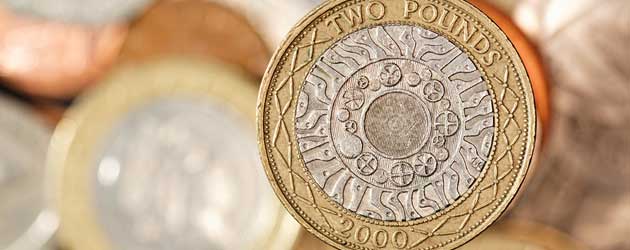 Following the publication of better-than-expected UK employment figures, both the Pound to Euro (GBP/EUR) and Pound to US Dollar (GBP/USD) exchange rates advanced.
Following the publication of better-than-expected UK employment figures, both the Pound to Euro (GBP/EUR) and Pound to US Dollar (GBP/USD) exchange rates advanced.
Sterling posted widespread gains as investors responded to the report, which detailed a -37,200 decline in the number of people filing for unemployment benefits. A shallower drop of -30,000 had been forecast.
Although the UK added fewer positions than expected in the three months to July, with employment increasing by 74,000 rather than the 120,000 expected, the nation’s unemployment rate still plummeted from 6.4% to 6.2% – beating predictions for an unemployment rate of 6.3%.
Less positively, average weekly earnings (which have been running well below inflation for a considerable amount of time) climbed by only a little more than expected in the period.
The Pound Sterling to Euro (GBP/EUR) exchange rate hit a high of 1.2595.
Industry experts expected average earnings to have risen by 0.5% in the three months to July on a year-on-year basis, having fallen by an upwardly revised -0.1% in the three months to June.
However, average earnings actually rose by 0.6%. Weekly earnings excluding bonuses were up 0.7%, in line with projections and unchanged from the previous month’s positively revised figure.
The result saw Chancellor of the Exchequer George Osborne comment; ‘Today’s employment stats mark another step towards full employment. But still much more to do’.
Sterling was moderately strengthened by the employment figures, but the currency’s show of resilience against the Euro and US Dollar was also due to the Bank of England’s meeting minutes.
The Pound Sterling to US Dollar (GBP/USD) exchange rate hit a high of 1.6336.
Back in August two of the more hawkish members of the Monetary Policy Committee voted in favour of increasing interest rates, marking the first division among the policy makers for several years.
There had been some concern that in light of the recent run of disappointing UK reports and Scottish referendum concerns, those votes would be retracted. However, the minutes from the September meeting showed the same 7-2 split.
The minutes stated; ‘For two members, economic circumstances were sufficient to justify an immediate rise in Bank Rate. While CPI inflation was below the target, and was likely to fall further in the near term, this was largely the effect of the exchange rate rise in the first part of the year. Just as the Committee had looked through that effect when it had pushed inflation up, it was appropriate to look through it at present. Meanwhile, the economy continued to grow at a pace consistent with the rapid absorption of slack, and the signs of any easing in growth in Q4 were as yet only tentative. Survey evidence of tightening in the labour market suggested that wage growth might pick up quite sharply as slack was absorbed.’
Pound Sterling (GBP) Exchange Rate Forecast
Although the Pound did strengthen during the European session, gains in the British currency were a little restrained as investors continued to focus on the upcoming Scottish referendum.
With some industry experts predicting that a ‘Yes’ victory could see the Pound devalued by as much as 15%, the outcome of the vote will have a huge influence on Sterling’s medium-term performance.
If Scotland votes ‘No’, however, the Pound is likely to recover all of the ground lost over the last few days and advance on peers like the Euro and US Dollar.
Pound (GBP) Exchange Rates
[table width=”100%” colwidth=”50|50|50|50|50″ colalign=”left|left|left|left|left”]
Currency, ,Currency,Rate ,
Pound Sterling, ,US Dollar,1.6288,
,US Dollar,1.6288,
Pound Sterling, ,Euro,1.2573,
,Euro,1.2573,
Pound Sterling, ,Australian Dollar,1.7945,
,Australian Dollar,1.7945,
Pound Sterling, ,New Zealand Dollar,1.9930,
,New Zealand Dollar,1.9930,
US Dollar, ,Pound Sterling,0.6139,
,Pound Sterling,0.6139,
Euro, ,Pound Sterling,0.7952,
,Pound Sterling,0.7952,
Australian Dollar, ,Pound Sterling,0.5549,
,Pound Sterling,0.5549,
New Zealand Dollar, ,Pound Sterling,0.5011,
,Pound Sterling,0.5011,
[/table]

